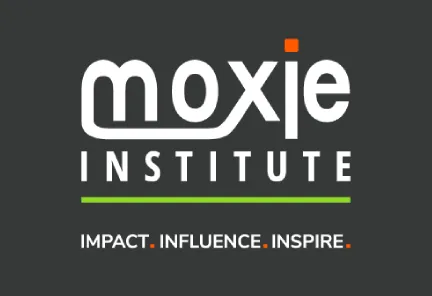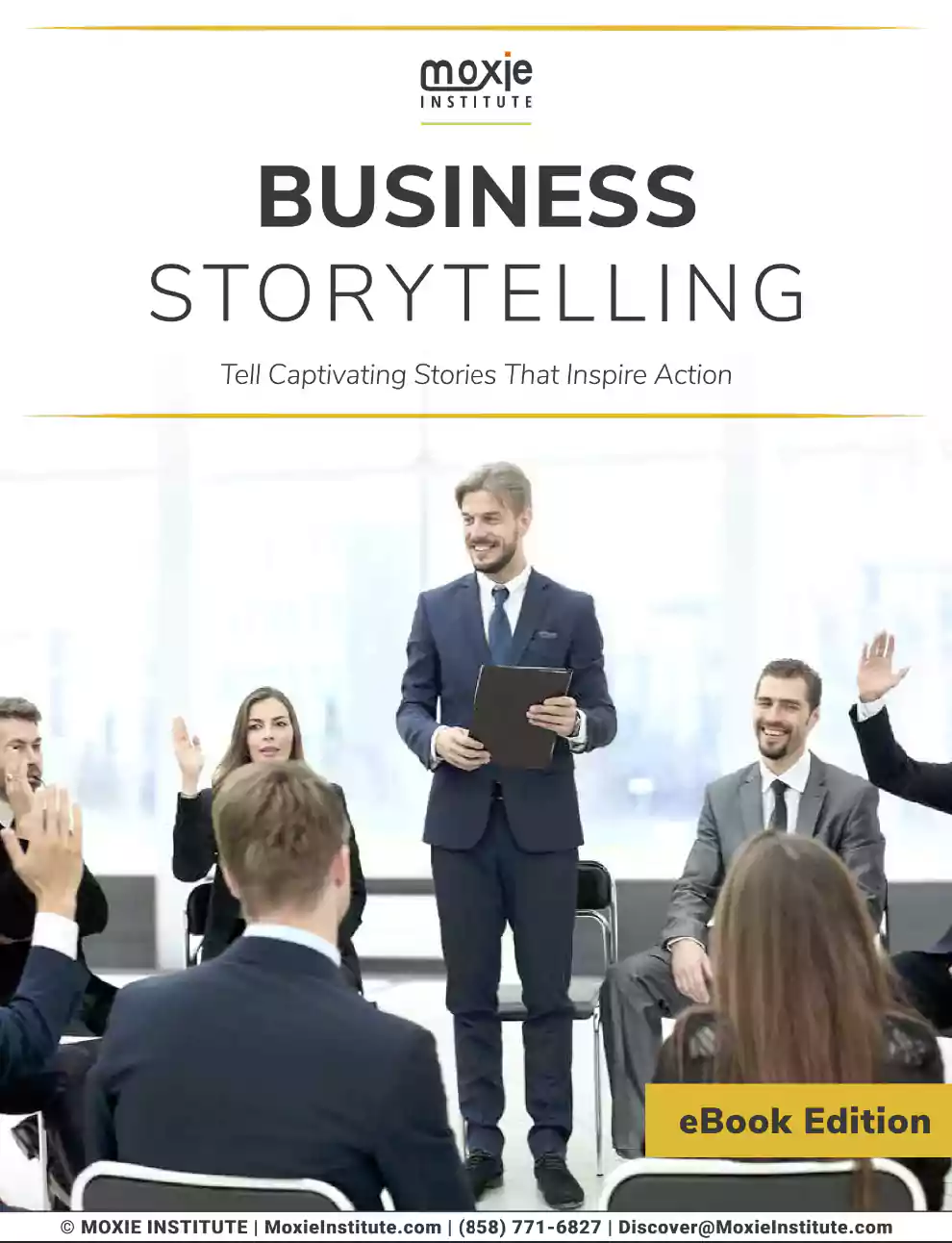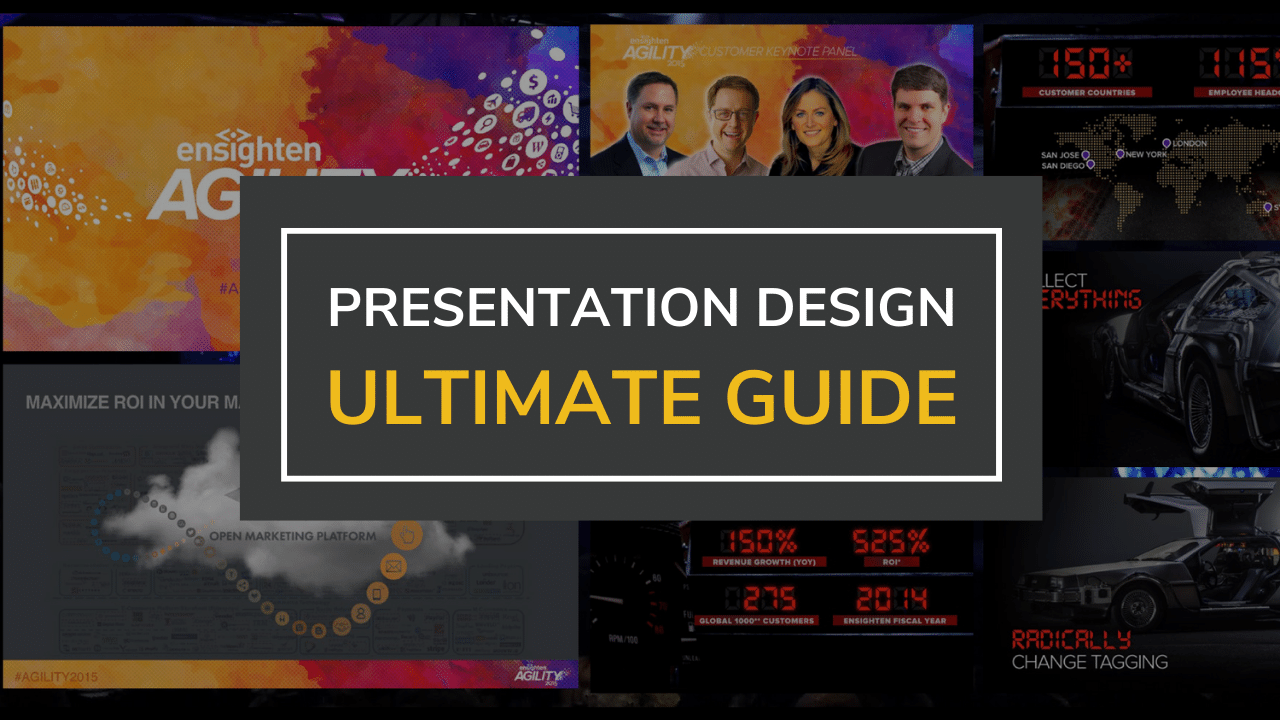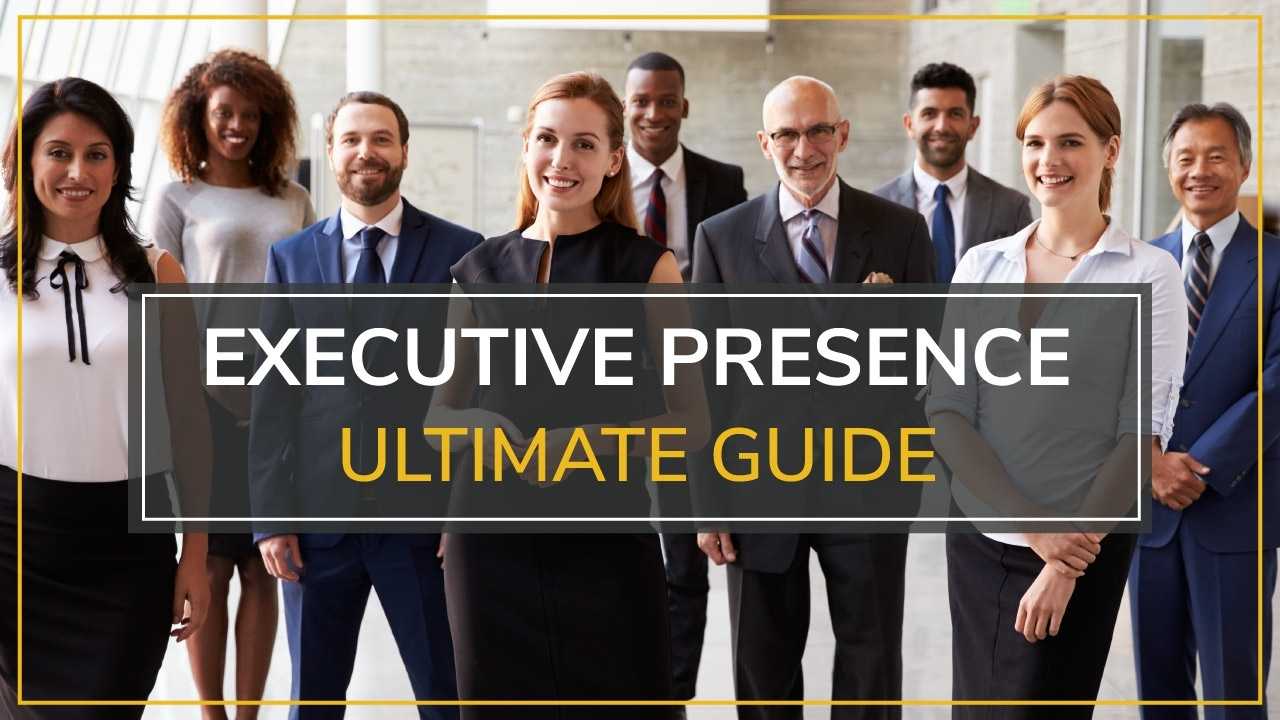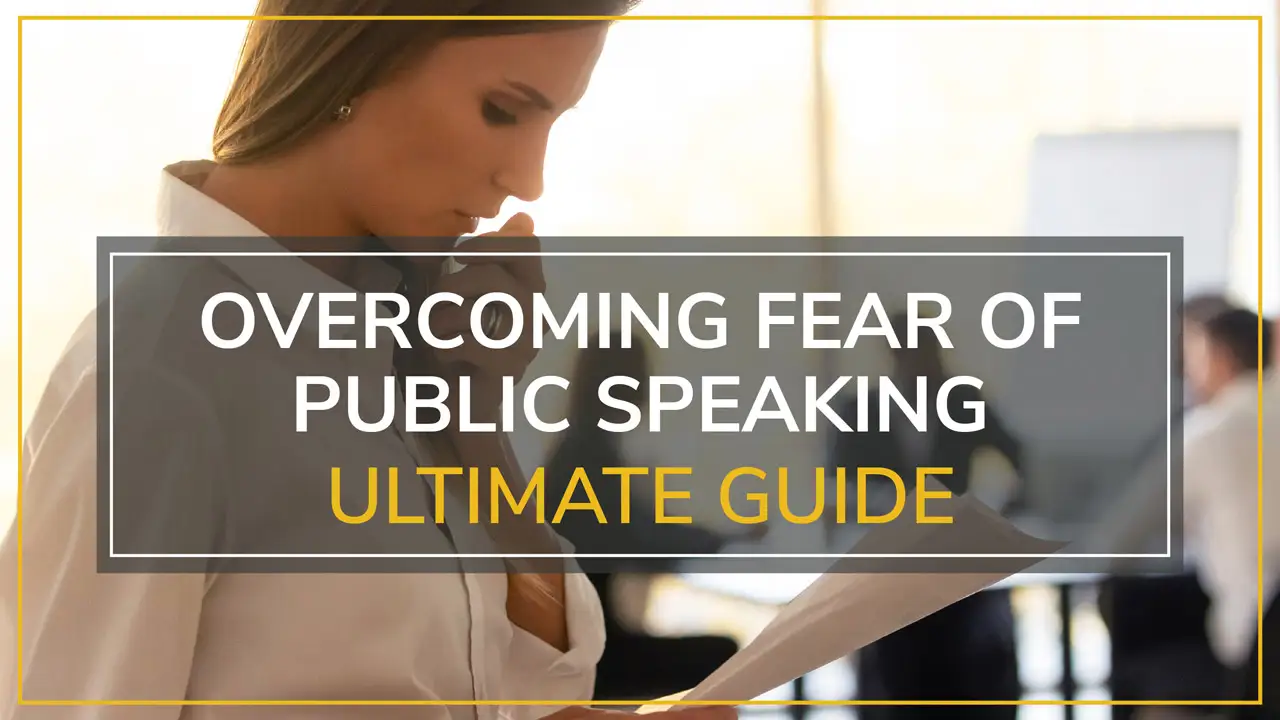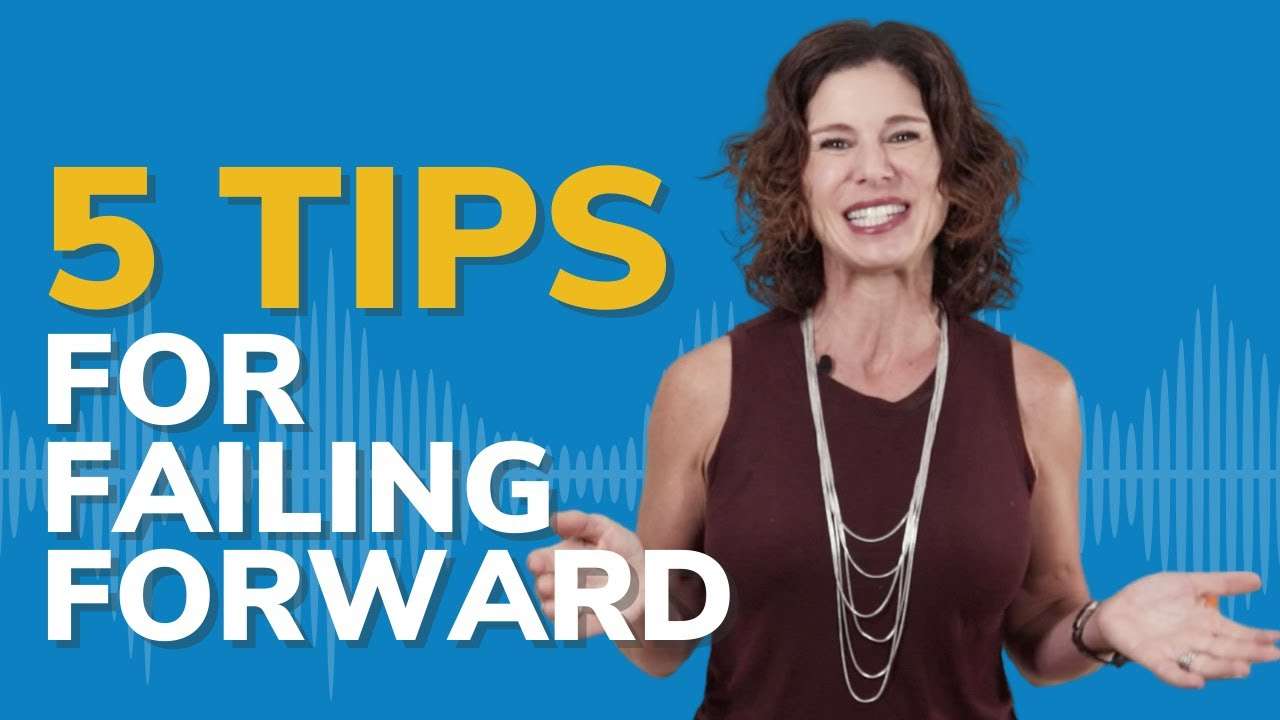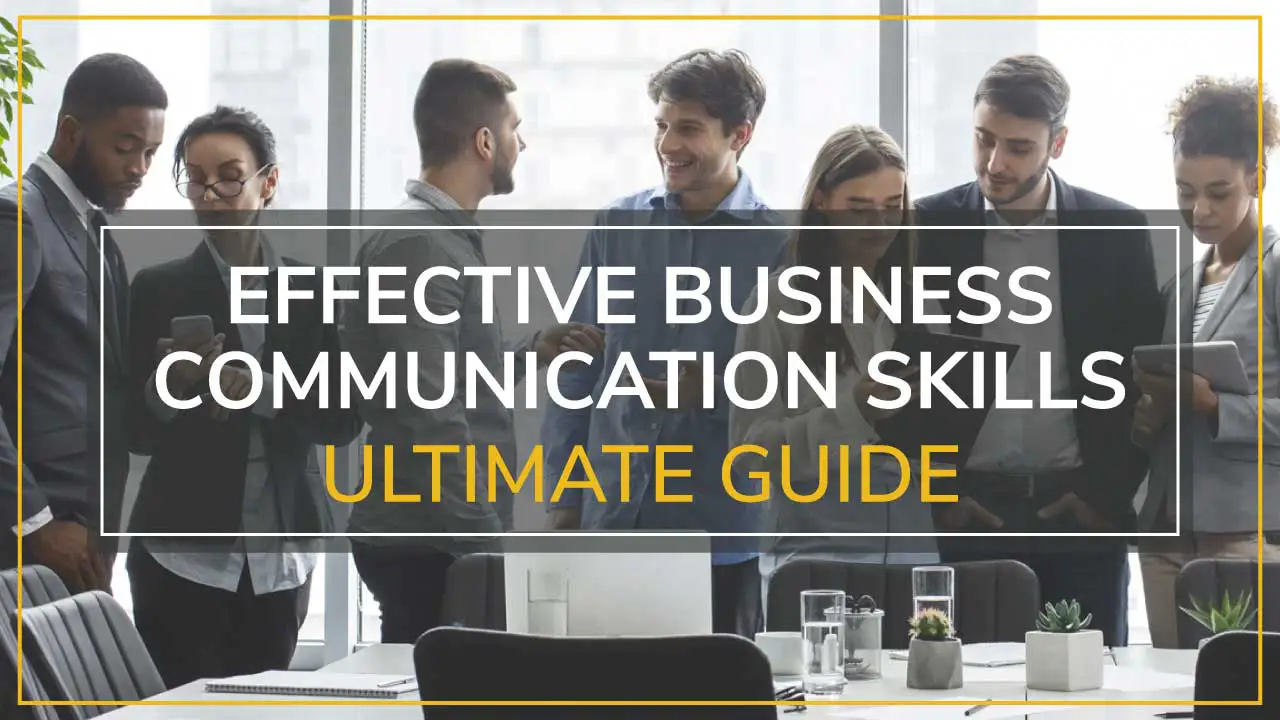Understanding the Science of Audience Engagement
Did you know that some speakers capture the attention of their audience and hold it, while others are not even able to retain the most necessary attention? The distinction is not magic — its methodology. In its essence, audience engagement is a science, grounded in basic principles of human psychology and cognitive psychology that can be taught, practiced and refined.
Being able to improve audience engagement is not just a nice-to-have skill — it’s a must-have skill for anyone who wants to communicate effectively, from executives who share quarterly results to team leaders who run weekly meetings. Once you grasp how attention is wired in the brain and how it functions in the mind, you have premises with which to build audiences of participants who listen intently to your first word to your final call to follow you.
The Neuroscience Behind Attention
Our brains are wired to continuously filter information. The average adult attention span has plummeted from 2.5 minutes in 2004 to a shockingly brief 47 seconds today, according to research by Gloria Mark at the University of California Irvine, which is why audience attention is more valuable than ever. This is a neurological fact that offers both challenges and opportunities for presenters.
A gatekeeper in the brain is if you will, the reticular activating system (RAS) that decides what to pay attention to and what to ignore. The way to circumvent this gatekeeper is to set off what neuroscientists refer to as an “orienting response” — our inborn reaction to new or possibly significant stimuli.
In my work with Fortune 500 executives, I’ve discovered the presenters who strategically use novelty, contrast and emotional relevance to grab our attention: increase engagement significantly. For instance, when training a pharmaceutical executive for a high-stakes product release, we worked with her to integrate iconoclastic data visualizations that activated this orienting response – leading to 34% greater recall of critical messages than after earlier presentations.
Engagement Essentials:
- The brain consumes 20% of the body’s energy, making attention a precious and finite resource
- Dopamine release drives focus and information retention during presentations
- Multi-sensory engagement activates more neural networks, creating stronger memory pathways
Psychological Triggers for Connection
“Beyond the realm of the neurosciences, psychological factors play an enormous role in listener engagement. Harvard psychologist Dr. Susan David’s research on emotional agility, and her research shows that emotional connection occurs before intellectual buy-in: Basically, people decide how they feel about your message before they decide what they think about your message.
This emotional basis is the reason our most captivating presenters first establish a sense of psychological safety—and a sense of feeling valued, understood and included—in the room. In working with C-suite executives to prepare for boardroom presentations, I teach the need to lay this groundwork in the opening seconds by connecting authentically, framing effectively, and being strategically vulnerable.
The concept of cognitive load influences engagement as well. This principle states that the brain can only handle so much new information at once because of its finite working memory capacity. When a presentation fills this capacity with dense information and slides and ideas that aren’t connected, engagement drops off and the brain has a hard time keeping up.
Through our courses at Moxie Institute, we’ve discovered the most powerful psychological triggers that are always at play when it comes to resonating with an audience:
Personal relevance: Positioning material through audience concerns and issues
Cognitive dissonance: Also cross-cutting is the creation of tension in the minds of the audience members between what they already believe and what we suggest they might believe.
Identity affirmation: Tying your message to how people like to perceive themselves
Autonomy support: Providing the audience with viable options as opposed to imposing conclusions on them
Indication of progress: Demonstrating visible progress through a journey with milestones.
Quick Takeaways:
- Sensitivity intensifies the level of intellectual involvement
- The brain wants patterns and significance – help the audience connect the dots instead of just giving them dots.
- What happens when you engage in these conversations. Psychological safety comes before deep learning.
- Cognitive challenges retain interest when the strategy is clear
Mastering the First 90 Seconds
The introduction of your presentation is a crucial first step because it allows you to grab your audience’s attention or lose them to their inevitable distractibility. Research from the Cognitive Neuroscience Society, judgments about speaker credibility and content quality are formed within the first minute of exposure — making the introduction the potentially most powerful part of your speech.
Creating an Unforgettable Opening
Traditional lead-ins such as “Today I’m going to talk to you about…” or “I’m going to share the story of our company. …” to waste valuable seconds when the ogling audience is most stimulated. Instead, the gurus apply pattern interrupts and attention triggers that instantly say to the filtering system, “this is something new” and it lets it go through.
After tuning up speakers and Fortune 500 executives in our presentation coaching sessions with TEDx speakers, five strategies for opening create high-impact openings that consistently grab attention:
- The provocative question: Begin with a mind-bending question that contradicts common wisdom or prompts readers to reflect on themselves.
- The surprising stat: Grabbing attention by leading with an unexpected data point.
- The strategic drill: Start with a short, applicable anecdote that raises the stakes
- The Twin Concepts Effect: A way to bring together divergent ideas in a way they immediately repel.
- The physical pattern interrupt: Interrupting the traditional pattern of presentation through movement, tools or demonstration.
Its power lies in its ability to call forth the brain’s orienting response, while simultaneously establishing an information gap that stands at the heart of what researchers have identified as the engagement paradox that makes us pay attention.
Pro Insight: When writing your introduction you want both brain buy-in and heart buy-in. Our research with high-stakes presenters demonstrates that emotional and intellectually curious openings lead to 40% greater retention of subsequent content than purely informational openings.
Establishing Credibility Quickly
People are quick to decide whether to give you their attention, and they do so by picking up subtle signals of competence, confidence, and relevance. According to Stanford University investigation into the issues of speaker credibility, audiences evaluate three most important aspects of speaker from the first seconds they begin listening to him/her:
- Authority: Your credentials or knowledge of the subject matter
- Applicable knowledge: Your degree of understanding for what their pain points look like.
- You delivery congruence: The match between what you’re saying and who you’re being
Rather than opening with credentials or company history, establish these elements implicitly through the framing of your content. When coaching executives for investor presentations, we help them weave credibility markers naturally into their opening narrative rather than presenting them as separate elements.
Instead of telling them “I’ve been in this industry for 15 years” you might go with: “One thing that I’ve realized while working with production teams on three continents is a pattern that is extremely relevant to supply chain problems you’ve been experiencing…”
Implementation Exercise: Record the first 90 seconds of your next speech and these questions:
- How soon do you get to the moment that matters for your niche?
- You give them a reason to WANT to listen as opposed to HAVE to listen.
- What kind of emotional place does your opening land us in?
- How do you communicate your Value View?
The Art of Dynamic Storytelling
Stories are not only entertaining — they are neurologically irresistible. When people hear a good story, their brains synthesize oxytocin, the “love hormone,” a good dose of which makes people more invested in the story emotionally. In addition, stories tap into many of brain regions at once, establishing more solid paths in the brain for the maintaining and recall of information.
As presentation skills trainers, we know that presenters who nail strategic storytelling achieve staggering impact: data communicated through story is remembered over 22 times more than data told in charts, stats and facts.
Crafting Stories that Resonate
Powerful business storytelling goes beyond mere anecdotes. It cannot be arbitrary, must connect narrative components to your message and be respectful to the time and attention of the audience.
The best presentation stories share the following elements:
- Pertinence: They are absolutely relevant to the audience problems or goals
- Specificity: These are details that can be physical and authentic or mental and imaginative
- Tension: They create stakes in the form of obstacles, struggles, or questions
- Resolution: They provide a clear payoff that sheds light on your overarching message
- Brevis: They are short, and contain no surplusage.
When we work with business leaders getting ready to deliver important presentations, we employ a framework called “Strategic Story Pathing” to determine which narrative approach will be the most effective:
- The Challenge Story: Demonstrates a problem and a solution within context
- The Connection Story: Connects through vulnerability and shared experiences
- Power of Clarity: Uses storytelling to simplify the complex
- Show Transformation: Illustrated Before/After Contrast to Prove Change has Occurred
Story Engineering: Find the Most Abstract Thing Technique: Think about a presentation you need to give in the next week. Then inquire: “Where have I seen this principle in practice?” Come up with 1 one-minute anecdote to illustrate the point not make it in theory.
Using the Hero’s Journey in Presentations
The hero’s journey— a story template described by scholar Joseph Campbell that pops up in cultures all over the world— is a potent way to think about how to structure a presentation. They’re asking how we can make work, the world and ourselves better.” advertisement We’ve taken this tried-and-true model and adapted it for business and leadership situations.
In our public speaking training, we share a simplified version of this structure with presenters:
- The Status Quo: Set up what is happening or what the problem is
- The Disruption: Enter a situation, opportunity, or problem that creates tension
- The Struggle: Admit the challenge and the piping-hot stakes
- The Revelation: Lead with the new idea or method that opens up new opportunities.
- The Metamorphosis: Show the outcome or effects in tangible terms
- The New Reality: From here, work towards what’s next
What is so effective about this structure is that it mirrors the way the brain processes information. This cycle of tension and resolution is equivalent to the pleasure we feel when we solve a problem and accounts for what neuroscientists call the “narrative transportation effect” — in other words, when readers or viewers simulate in their minds the actual experiences the characters are undergoing.
Strategic Application: The hero’s journey is especially useful for:
- Change management initiatives
- Product launches and innovation announcements
- Leadership vision presentations
- Case studies and success stories
Pro Tip: If you’re using stories, give the audience a cue that it has started and that it ends with a slight change in voice, pacing and physicality. These narrative brackets help audiences process the information in their heads and signal to them when you’re switching back and forth between story and analysis.
Strategic Body Language and Stage Presence
You are visually present before you are physically so. We have always known that the majority of what we “say” isn’t said; Research from UCLA’s Albert Mehrabian demonstrates that 55% of your communication impact is nonverbal when you are communicating feelings and attitudes. In our work coaching executive and TED speakers, we concentrate on the need to turn physical presence from just an afterthought into a strategic tool for communication.
Commanding the Room Physically
Good presenters pace around and position themselves carefully to keep an audience’s attention and focus attention on the screen. Instead of blind movement, we foster “purposeful navigation” — deliberate positioning that plays off your content structure and adds visual interest while reinforcing your message.
Meant for high-impact physicality:
- Stake your claim: Be a territory taker on the whole stage with purpose—don’t fall into the “podium trap” or the “slide shadow”.
- Create anchor points: These are physical locations in your content that map to different parts of the content.published on the web.trailing # It can be used to generate a “filepath” that references a file that has been # copied to a written directory.
- Telegraphing transitions: Gesture to signal attention shifts or the change of energy level
- Get close: Stand next to your audiences at the most important times, or when you want feedback
- Remove obstacles: Remove any unnecessary barriers – physical or other – between you and the audience.
In our work with leadership teams that are prepping for high-stakes presentations, we’ve learned that presenters who employ strategic movement receive audience engagement scores that are significantly higher than those who remain behind the podium —even when they deliver the same content.
Executive Presence Principles:
- Forward-leaning posture The confident and interested cues each other with posture.
- An open body especially above the waist will seem to be more commanding and active
- Advancing towards questions helps establish contactIt’s a move towards the audience which creates a psychological rapport.
- The well-timed pauses themselves (complete with silence) highlight important moments
Leveraging Vocal Variety
Your voice is arguably your most versatile engagement device. Through our work with broadcasters and professional speakers, we have found vocal variety to be one of the most underutilized elements of presentation effectiveness.
As is known, the human voice is able to express over several channels at the same time:
- Pace: The speed of delivery, including strategic acceleration and deceleration
- Pitch: The musical range from low to high tones
- Volume: The strategic use of loudness and quietness as emphasis tools
- Timbre: The textural quality of your voice (warm, sharp, resonant)
- Articulation: The clarity and precision of word formation
In our public speaking coaching, we teach a technique called “vocal landscaping”—intentionally varying these elements to create an engaging auditory experience that maintains attention throughout your presentation.
For instance, when I was coaching a healthcare executive on a crucial board presentation, we mapped vocal shifts to types of content — deploying a lower, measured tone for problem statements; an energetic, varied tone for solutions; and a warm, inclusive tone for collaborative sections. This resulted in a 27% increase in participation with the board compared to prior presentations.
Practical Application: Film yourself presenting a part of your speech, and answer these questions:
- Is there a point at which strategic caesurae could help draw attention?
- Where would it be better to make the parts faster or slower?
- Where might volume changes emphasize without shouting?
- What’s the relationship between your vocal energy and the energy of your content?
Interactive Techniques That Transform Passive Listeners into Active Participants
The contrast between forgettable and fabulous presentations frequently boils down to a simple distinction – the transformation of audience members from spectators into friends. Research on learning and memory show that interaction, as opposed to a traditional one-way presentation, leads to retention of over 80%.
Effective Questioning Strategies
Strategic questions play a number of engagement roles: they switch the brain onto its problem-solving system, they have personal investment implications, and they tell the act of communication whether the audience is following along. Not all questions are created equal, though.
In our work mostly training sales teams as well as executives, we classifying three questioning methods, for three types of purposes of engagement.
- Rhetorical questions: Generate inner voice without demands for replies
Example: “What if you could boost team performance by 30% without needing to add more resources?”
- Close-ended questions: Request a particular or definitive response from a person or the group.
Example: “What’s one issue you’re having with customer acquisition right now?
- Thoughtful questions: Encourage higher level thinking with questions that don’t have just one answer
Examples: “If you put psychological safety over short-term results, how would your leadership style change?”
The best of presenters actively mix in some of each, at key areas of their presentations to keep it interesting. For instance, when we trained a tech executive for an industry keynote, we worked with her to embed particular question prompts that would act as guideposts that lead to an engagement arc throughout her 40-minute presentation.
Question Implementation Framework:
- Use rhetorical questions during your opening to create mental engagement
- Incorporate direct response questions when energy naturally dips (typically 10-15 minutes in)
- Employ reflective inquiries when introducing complex or challenging concepts
- Close with forward-focused questions that drive action and implementation
Technology-Enhanced Engagement
Technology now allows for new level of audience engagement. One of the things we’ve discovered in our presentation tips is how to use a cool visual tech to engage (as well as dull) an audience.
Family of interactive technologies:
- Live polling: Collect and use audience opinions to instantaneously integrate in your content
- Virtual Whiteboards: Facilitate collaborative ideation that is seen by all participants
- Backchannel conversation: Establishing moderated communication with a text compliments to presentations.
- Co-created content: creating solutions with audience Contribution In a collaborative process of solution generation by using co-creational tools
- Decision simulators: Guiding audiences through consequence scenarios with alternate choices
In other words, it’s not the technology that you use, but the way that you use it to support your message. While advising a financial services team on coaching for a client presentation, we enabled the team to create interactive financial modeling for the clients to manipulate investment scenarios in real-time—dramatically increasing client engagement and speed of decision.
Engagement Experiment: The next time you’re making a presentation, tag certain points in your talk as “participation zones.” Make it clear that at these points, the audience is supposed to contribute. Set up these zones explicitly: “We’re going to build our solution together out of your live input for the next five minutes.”
Reading and Adapting to Your Audience in Real-Time

The very best speakers don’t just recoil into the drone of a pre-planned text — they react, continually, to what their audience is feeling. This dynamic approach takes the combination of heightened consciousness and flexible delivery, as it turns presentations from monologues into conversations.
Recognizing Engagement Signals
Audience response takes place without pause in nonverbal signals of attention, incomprehension, agreement or disaffection. In our work coaching executives for high-stakes presentations, we teach presenters to monitor these signals methodically, rather than impressionistically.
Key engagement metrics are:
Physical position: Leaning forward means interest, leaning back can be interpreted as skepticism
Eye behavior: Strong eye contact signals interest, rapid blinking suggests anxiety, or opposition
Micro-expressions: Fleeting facial movements disclosing emotional reactions before being consciously managed
Group synchronization: Collective movements in position, attitude or level of energy to indicate unified response
Online conduct: Behaviours like taking notes, being on the device or participating in digital channels
Through our presentation skills training, we aid communicators in developing what we refer to as “engagement radar,” the skill to scan and read audience signals while driving the content home. This multitasking ability enables presenters to collect feedback simultaneously without interrupting their flow.
Audience Reading Technique: Next time you have an opportunity to present, use the “quadrant scan” — every minute you glance at what is happening in one quadrant of the room. Pay special attention to the fit between your desired impact and the real-time signals from your audience. Differences for adaption I’ll add it to the article soon.
Pivoting When You’re Losing Them
Even the most carefully crafted presentation can fall flat. The gap between experienced and novice speakers is not whether they struggle with disengagement, but in how they can sense and handle it.
For when your airwaves grow static, tactical shifts could include:
- Accelerated content: Faster to stay ahead of the curve.
- Interruptions: Changing the mode of delivery, or activity, to reset attention
- Acknowledging and resolving: Approaching directly the confusion or uncertainty directly evident in prospects minds.
- Enrichment examples: Providing additional concrete examples when the concepts aren’t quite sinking in.
- Interactive shift: Getting audience to participate, maybe through questions or exercises.
Here at Moxie Institute, we teach speakers a model known as “responsive recalibration”, which means constantly amending slides and stories on the fly so that speakers can remain message pure, while still playing to their audience.
For instance, when coaching an executive for an industry keynote that simply wasn’t landing with the audience, we guided him through implementing a mid-presentation pivot. By noticing indicators of a conceptual misalignment early on, he incorporated an impromptu interactive discussion with participants that unveiled the pain points, and recalibrated his rest of the material to address those: shifting possible non-engagement to one of his most effective speech.
Adaptation Planning Exercise: For your next important presentation, create a “pivot plan” with specific adaptations for potential audience responses:
- If you observe confusion: _________________
- If you notice skepticism: _________________
- If energy seems low: _________________
- If time is running short: _________________
- If technical problems occur: _________________
Advanced Visual Storytelling Strategies
The visual of your delivery has outrageously high engagement potential which most presenters eons under use. Findings in brain imaging studies reveal that visual processing engages nearly 30% of our cortex, more than any other known sensory system, offering rich opportunities to connect with audiences.
Beyond Bullet Points
That’s because traditional text-heavy slides lead to what cognitive scientists call “processing interference” — the need for audiences to choose between reading slides and listening to you, which diminishes comprehension of both. In our visual storytelling workshops, we guide presenters on how to develop what we’ve dubbed “visual amplification”—the use of images to amplify—not to say the same thing as what’s being spoken.
Good visual approaches are as follows:
- Conceptual imagery: Metaphorical visuals that visualise ideas, rather than listing them.
- Progressive disclosure: Presenting information in piecemeal instead of all at once.
- Visual contrast: Creating deliberate before/after or problem/solution visual comparisons
- Data visualization: Transforming numbers into meaningful, intuitive visual stories
- Visual hierarchy: Designing slides with clear focal points that guide audience attention
When I work with executives on product launches and investor presentations, we use a technique called “single-concept framing.” This means that every slide contains just one core idea communicated largely through pictures with as little text as necessary.
Visual Transformation Challenge: What are the three most text-dense slides in the pres he is working on? For each, ask:
- What’s the single most important concept on this slide?
- What visual metaphor could represent this concept?
- What information is truly essential vs. supporting detail?
- How could this information be sequenced rather than presented simultaneously?
Creating Visual Moments of Impact
When you’ve got that nailed down, visuals can also help create what neuroscientists call “peak-end encoding” — vivid, memorable images that help your audience hang on to key ideas when they’re forming memories of your content. These scripted visual events evoke higher arousal and much better retention than typical slides.
Through our work with TED speakers and keynote presenters, we’ve identified several visual impact techniques that consistently drive audience engagement:
- Reveal sequences: Add visual elements one by one for anticipation.
- Visual demos: Using props, body movement, or call-and-response to demonstrate concepts
- Comparative scale: Demonstrating comparative size, scope, or impact through visual comparison
- Pattern interrupt: Interrupting an expected visual rhythm with deliberate difference
- Environmental integration: Incorporating the physical presentation space into your visual story.
We were coaching a healthcare executive for a board presentation on innovation investments and we created a ‘show and tell’ where board members built a simple device to demonstrate the technology gap – they not only understood but also felt emotionally connected in a way that an ordinary slide could never achieve.
Pro Strategy: Have at least one “signature visual moment” planned for every presentation — a wow-inspiring picture, demo, or audience interaction that demonstrates the core message. These peaks help establish what memory experts refer to as “flashbulb encoding,” making it more likely that other surrounding information about the event will be recalled over the long haul.
The Power of the Unexpected

The brain, at root, is a prediction engine, constantly anticipating what is about to happen. When such predictions are thwarted through strategic surprise, this attention-blip can be utilized to forge powerful opportunities for engagement. This concept pulls from neuroscience to clarify why surprises in presentations are so disproportionately powerful when it comes to capturing and holding people’s interest.
Pattern Interrupts That Captivate
Pattern interrupts—disruptions in the pace and rhythm of a delivery—generate what neurologists term “orientation responses,” or in essence resets of viewer attention. In our work coaching executives and professional speakers, we’ve developed a taxonomy of pattern interrupts that re-engage audiences without the need to resort to trickery.
Examples of Successful Pattern Interrupts are:
- Narrative shifts: Unexpected transitions between story and analysis
- Sensory changes: Introducing elements that engage different senses
- Participatory moments: Suddenly involving the audience after passive listening
- Perspective flips: Presenting counterintuitive viewpoints or devil’s advocate positions
- Tonal transitions: Strategic shifts between serious/light or formal/casual delivery
In coaching a financial services executive for an industry keynote, we had him plan pattern interrupts strategically at Jedi moments of attention vulnerability (usually at 10, 25, & 40 minutes into longer talks). The effect was a high level of listeners’ concentration with visibly increased level of listening to important points in his speech.
Common Engagement Pitfalls:
- Predictable Slide Patterns that engage Model Citizens’ mental autopilot
- Repetitive verses become hypnotic rather than engaging
- Energy levels that all tend to blur together and not create contrast
- Uniform content types, i.e. no data, no concepts, no stories.
- No twists, nothing unintended to learn from or relate to
Planned Spontaneity
The best presenters create the illusion of being in the moment and off the cuff via what we call “planned spontaneity”—thoroughly planned elements that feel spontaneous but that always engage.
In our public speaking tips sessions we focus on techniques such as :
- Controlled vulnerabilities: Sharing prepared “authentic moments” that create connection
- Strategic questions: Preparing for predictable audience responses to create dialogue
- Flexible content blocks: Designing modular content that can be rearranged based on audience needs
- Prepared asides: Developing relevant tangents that can be integrated naturally
- Response agility: Practicing adaptations to common audience reactions
When working with one CEO to prepare for an all-hands meeting about a tough company transition, for example, we created a grid of prepared-but-flexible responses to the questions we knew employees would ask. By anticipating the most-likely queries and crafting thoughtful, yet seemingly spontaneous, replies, she was able to pull off a delicate balancing act on tough issues: the appearance of authenticity with control over her strategic message.
Engagement Experiment: In your next speech, perform one “deliberate disruption”–a moment designed to disrupt your predictable pattern and snap attention back to you. It might be a challenging question, a short activity or an unexpected story or visual. Cite this element strategically at a lull.
Creating a Memorable Closing
The last thing you say in your presentation carries the most weight in terms of what people are apt to recall and do as a result of it. For those who think “memory” and “it’s over” means we have no way of experimenting with erasure, take a look at the primacy/recency effect, or what I call the “memory bath-tub” considering that the best retention is at the edges, both at the top and bottom, with the patients in the unforgettable middle.
The Psychology of Recency Effect
Cognitive psychologists have demonstrated this as well in their studies that the last thing you hear is the first to be encoded in memory. This recency principle opens up a golden opportunity to solidify your main message and takeaways in the final minutes of your presentation.
In our executive coaching for high-stakes presentations, we use something called “message compression”—boiling down a lot of information to a single, memorable encapsulation of the point of a presentation. Unlike simple summaries, good closings generate what we call “resonant encoding” — an emotional and intellectual summation that serves to both enhance retention and motivate action.
Effective closing techniques are:
- Circular reference: Connecting back to your opening to create narrative completion
- Stakes elevation: Expanding from specific details to broader implications or vision
- Paradox resolution: Addressing the central tension introduced earlier in your presentation
- Future casting: Creating vivid imagery of implementation or results
- Values connection: Linking your message to core audience values or purposes
Prior to a breaking product announcement, we worked with a technology executive to structure a close to the press event that linked the technical advances to the human experience they would deliver—elevating the announcement from a feature to a purpose driven vision with resulting dramatically higher post-event enthusiasm scores.
Closing Construction Exercise: As you think about your next presentation, construct your close by responding to the following:
- What’s the most important single idea you hope people will take away from your talk (or interview, story, film)?
- What Feeling Do You Want Them To Take Away?
- What specifically would you like them to do?
- How is your message relevant to something bigger than the here-and-now?
Call-to-Action Strategies
But the true measure of engagement is the action you inspire, so consider your call-to-action (CTA) one of the most important graphics on your entire presentation. In our studies of sales presentations and leadership communications, we’ve learned the key elements of high-conversion CTAs versus one-time agreement CTAs.
Effective calls-to-action are:
- Specific: Defining exactly what action should be taken
- Sequential: Breaking complex actions into clear next steps
- Supported: Providing resources or assistance for implementation
- Simplified: Removing unnecessary friction or complexity
- Significant: Connecting the action to meaningful outcomes
In our presentation coaching, we offer a framework called “Action Architecture”— the art of designing a sequence of commitments that start when individuals conceptually believe what you believe and end when they’re taking all the daily steps to make it happen.
For instance, one time when we were helping a health care leadership team produce a presentation on a major change initiative, we worked with them to build a three-level CTA approach: a small direct action that everyone could put into practice that day; something of a medium commitment that they could take next week; and then a larger change with reflexive resources. This graduated approach led to 64% higher initiative adoption than previous rollouts which included single-level CTAs.
Advanced CTA Technique: Advanced You want to design what we call “visible commitment” – a point where some sort of action by the audience is incorporated into the presentation. It could be a physical gesture, a casual statement, an agreed upon oath or intentional decision point. These real-time engagement opportunities dramatically boost follow through by capitalising on consistency bias and social support.”
Frequently Asked Questions
What are the most effective ways to gauge audience engagement during a presentation?
The best cues for audience engagement aren’t verbal; they’re signs like leaning forward, making eye contact, nodding, taking notes, or responsive facial expressions. Audiences, according to a study from the Center for Creative Leadership, tend to exhibit “mirroring behaviors” that echo your level of energy and expression when engaged.
In the virtual sense you might be looking out for chat room activity, people using their webcams, submitting questions or using the tools. Based on our work coaching executives for high-stakes virtual presentations, we recommend setting a “digital engagement baseline” in the first five minutes with a basic interactive element, and then tracking deviations from the baseline throughout your presentation.
How can I effectively engage both technical and non-technical audience members in the same presentation?
This shared issue demands what I call “layered content architecture” — designing your presentation as a place where different levels of understanding can enter and exit through the estimable doors that it contains. Start with general ideas that link to common goals or values before talking about tools. Adopt a “progressive disclosure” style, beginning with high-level impacts and then moving in to implementation details.
For mixed audiences, we suggest applying the sandwich technique, here technical information should be packed between practical applications or business results. When we’re coaching technical leaders to present to a board or investors, we work with them to develop “translation bridges” — short, explanatory phrases that bridge a technical concept to business value without over-simplifying it.
What’s the ideal length of time to maintain maximum audience engagement?
There is evidence from the cognitive processing and attention literature that after 10 minutes, sustained attention degrades substantially in the absence of a reset. The point, though, is that presentations don’t need to be 10 minutes long – they simply need to incorporate a strategy for every 7-10 minutes that allows for a change in what the audience is doing in order to re-energise their attention.
When we train speakers in our presentation skills training, we coach them to organize their material in “engagement blocks” — blocks of time lasting between seven and ten minutes, each of which transitions from engaging a particular mode of audience engagement (reading, demonstration, lecture, discussion, application or concept and case study. This rhythmic pacing keeps the attention while also respecting cognitive limits.
How do I handle audience members who are distracted by technology during my presentation?
Channel integration Rather than combatting technology, strategic presenters leverage it through a process we call “channel integration.” From the outset, establish expectations around how technology will be used in your presentation. Try designing specific “device moments” during which you make it clear to the audience that it is your expectation they will use their devices to research, respond or take notes in response to content by employing them in ways you ensure connect directly with your content.
For really important sections, use phrases such as “I’d like your complete attention for the next three minutes” to draw a designated distraction-free zone. When we train executives for high-stakes presentations, we work with them to choreograph intentional technology transitions — moments when an audience moves between using devices and engaging directly, creating a rhythm that aligns with natural attention patterns rather than struggling against them.
What are the most common audience engagement mistakes presenters make?
We’ve coached thousands of presenters in various sectors when it comes to presenter engagement mistakes we see most often:
- Content overload: Trying to cover too much information without prioritization
- Misaligned complexity: Pitching content too advanced or too basic for the specific audience
- Energy mismatch: Failing to adjust delivery energy to the context and audience state
- Engagement assumptions: Believing audience attention is automatic rather than earned
- Feedback blindness: Missing or ignoring clear signals of confusion or disengagement
The plain and simple truth is that the most basic error most public speakers make is that they don’t know how to let go of “presentation egocentrism” – the idea that success means convincing your audience that your content is so valuable they’ll be willing to pay for it. In our executive coaching work, we focus on that move away from “what do I need to say?” to what should my audience feel?”
How should I adapt my engagement approach for virtual or hybrid presentations?
Virtual environments present different attention problems than those encountered in the real world and should be addressed with presentation affinities and attentional adjustment mechanisms. To move from in-person to virtual presenting, make these adjustments:
- Increase interaction frequency: Plan engagement elements every 3-5 minutes rather than every 7-10
- Enhance visual diversity: Use more frequent slide transitions and visual changes to maintain interest
- Employ shorter content blocks: Reduce uninterrupted speaking segments to maximum 2-3 minutes
- Leverage platform tools: Intentionally incorporate polls, chat, breakout rooms, and annotation features
- Create camera-worthy moments: Design specific points that motivate audience members to stay on camera
In our work coaching leaders as they transition to virtual leadership, we’ve discovered that the most effective virtual presenters activate what we refer to as “multi-channel engagement” — the ability to leverage components of the visual, auditory, and participatory to make up for the loss of attention that is natural for virtual spaces.
For hybrid presentations — that is, where some of the audience is attending in person and some virtually — the No. 1 challenge is finding equity of experience. Have design methods that work equally well for both groups and think of assigning an in-room “virtual advocate” to help with engaging and including those remotely.
What techniques work best for engaging audiences who seem resistant to my message?
When audiences are skeptical or resistant, persuasion tactics backfire, causing psychological reactance – a defensive reaction against perceived coercion. When we work with leaders as they lead their organizations through change, we’ve created a framework, “Resistance Reduction,” that applies even to the most difficult of groups:
- Validation before persuasion: Acknowledge legitimate concerns before presenting alternatives
- Selective agreement: Identify and emphasize areas of common ground before addressing differences
- Decision ownership: Create frameworks for audience autonomy rather than prescribed conclusions
- Incremental commitment: Seek small agreements that build momentum toward larger acceptance
- Option exploration: Present multiple pathways rather than single solutions
Psychologically, it’s about respecting the agency of the audience — their desire to feel more like active participants of the idea, rather than just subjects of the persuasion attack. In our executive coaching practice, we help leaders turn oppositional dynamics into collaborative inquiry by moving from advocacy to inquiry with questions like “What would have to be true for this approach to work in your context?”
How can I effectively engage international or cross-cultural audiences?
In this presentation we must be especially attuned to the communication variables that depend on culture. We have found these adaptations to be effective in our work training executives around the world:
- Adjust humor carefully: Humor is highly culture-specific; focus on universal observations rather than language-dependent jokes
- Calibrate directness: Match your level of directness/indirectness to audience expectations
- Modify participation approaches: Consider cultural norms around public questioning or disagreement
- Adapt pace and pausing: Some cultures value deliberate pacing with reflection time; others prefer energetic delivery
- Internationalize examples: Ensure case studies and references are globally relevant or clearly explained
When we are coaching executives to speak in front of global audiences, we use a technique called “cultural bridging” – that’s the ability to address differences head on all the while positioning them in a way that connects deeply to human values and experiences that extend beyond the geographical or cultural divides.
What’s the best way to use audience questions to increase engagement?
Strategic question management transforms Q&A from an afterthought into a powerful engagement tool. In our public speaking coaching, we teach what we call “Dynamic Question Integration” – techniques for leveraging audience questions to deepen connection and understanding:
- Preframe question expectations: Set clear parameters for when and how questions will be addressed
- Plant seed questions: Prepare the audience with example questions that model desired inquiry depth
- Use the “question bridge”: Connect audience questions to your core message with phrases like “That question highlights our main challenge…”
- Implement the validation pause: Acknowledge the value of each question before responding
- Create question equity: Balance participation across audience segments
The most absorbing presenters don’t think of questions as interruptions but as chances to speak to the audience’s matter at hand. When coaching executives for high-stakes investor presentations, we work to prepare them for likely questions with “response frameworks” — full answers that convey message discipline.
How do I maintain audience engagement when presenting technical or complex information?
Presenting in Teaching Technical presentations are a tough nut to crack — presenting is tough because of the cognitive load barrier and teaching your best content effectively is tough too. Over the years, working with engineering, scientific and financial executives, we’ve learned several techniques to sustain attention during complex presentations:
- Conceptual scaffolding: Build understanding progressively from familiar foundations to new concepts
- Chunking strategy: Break complex information into digestible modules with processing time between
- Application anchoring: Connect abstract concepts to concrete applications or outcomes
- Visual simplification: Use progressive disclosure to build complex visuals in layers rather than all at once
- Metaphor mapping: Develop precise analogies that connect technical concepts to familiar experiences
For instance, when I coached a pharmaceutical executive delivering clinical trial information to non-medical audiences, we helped her create a “precision-to-relevance” approach – kicking-off each technical section with an explicit connection to why the information is relevant to the audience before discussing specific details.
Creating a Comprehensive Engagement Strategy
It’s great to be proficient in these various means of individual engagement, but high-impact presentations cannot be simply pieced together. By combining all these elements, you can create what we refer to as an “Engagement Architecture” – a connected blueprint that ensures you stay connected on your presentation journey.
Always remember that audience engagement is not simply a speaking skill, it is a leadership competency that adds power to the delivery of every message in every context. When you learn the art & science of engaging others you revolutionize not just your presentations but your ability to influence, inspire and drive significant action.
The top presenters know that engagement is not about performing tricks – it’s about being authentic and delivering value. As you incorporate these strategies, keep in mind the essential question that should drive any meaningful engagement: “How can I create the most valuable experience for this particular audience at this particular moment?”
Book an in-house presentation skills workshop with our specialist trainer today. Learn more about how the research and evidence-based strategies and techniques by Moxie Institute can support you and your team in advancing the engagement skillset to turn your typical presentations into game-changing impact.
TAKE THE FIRST STEP TO MASTER POWERFUL NEW SKILLS
Schedule an easy 30-minute call using our using our calendar. We’re here to help!
